Chania,Crete 作者: 来源: 发布时间:2021-07-12
I.Population and Area
Location within the region
Coordinates: 35°31′N 24°1′E
Administrative region Crete
Regional unit Chania
Area
• Municipality 351.3 km2 (135.6 sq mi)
• Municipal unit 12.56 km2 (4.85 sq mi)
Elevation 20 m (70 ft)
Population (2011)
• Municipality 108,642
• Municipality density 310/km2 (800/sq mi)
• Municipal unit 53,910
• Municipal unit density 4,300/km2 (11,000/sq mi)
Demonym(s) Chanean, Chanian
Time zone UTC+2 (EET)
• Summer (DST) UTC+3 (EEST)
Postal code 73100
Area code(s) 28210
Vehicle registration ΧΝ
Chania is the second largest city of Crete and the capital of the Chania regional unit. It lies along the north coast of the island, about 70 km (43 mi) west of Rethymno and 145 km (90 mi) west of Heraklion.
The official population of the municipal unit (the former municipality) is 53,910, while the municipality has 108,642 inhabitants (2011). This consists of the city of Chania and several nearby towns and villages, including Kounoupidiana (pop. 8,620), Mournies (pop. 7,614), Souda (pop. 6,418), Nerokouros (pop. 5,531), Daratsos (pop. 4,732), Perivolia (pop. 3,986), Galatas (pop. 3,166) and Aroni (pop. 3,003).
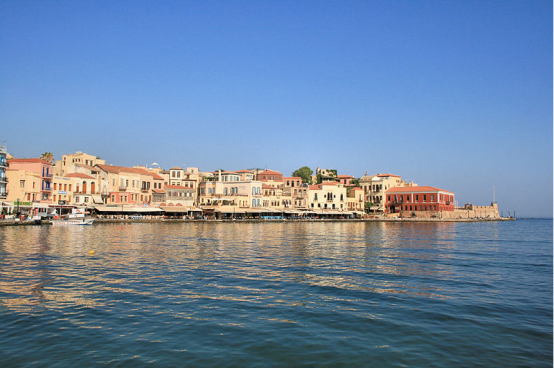
II.Natural Geography (environment and resources)
Geography
The city of Chania lies around 40 km (25 mi) from the west end of Crete. By road, the distance is approximately 52 km (32 mi).
Cityscape
The city of Chania can be divided into two parts: the old town and the modern city which is the larger one. The old town is situated next to the old harbour and is the matrix around which the whole urban area was developed. It used to be surrounded by the old Venetian fortifications that started to be built in 1538. Of them, only the eastern and western parts have survived. From the south, the old town is continuous with the new, and from the north the physical border is the sea. The centre of the modern city is the area extending next to the old town and especially towards the south.
The old town
The borders of the Old Town are the mostly destroyed old Venetian wall (and bulwarks) and this has been the cradle of all the civilizations which were developed in the area. The central part of the old town is named Kasteli and has been inhabited since Neolithic times. It is located on a small hill right next to the seafront and has always been the ideal place for a settlement due to its secure position, its location next to the harbour and its proximity to the fertile valley in the south. Nowadays it is a bit more quiet than the neighbouring areas of the west part of the district. The Splantzia quarter (next to the east part of Kasteli) is also largely untouched.
The main square of the Old Town (next to the west end of Kasteli) is Eleftherios Venizelos Square, also known as Syntrivani (from Turkish şadırvan 'fountain'). It is the heart of the touristic activities in the area. Next to this (on the west side) lies the Topanas district, which was the Christian quarter during the Ottoman period. Its name comes from the Venetian ammunition warehouse (Turkish tophane), which was located there. The Jewish quarter (Evraiki or Ovraiki) was located at the north-west of the Old Town, behind the harbour and within the borders of Topanas. The Topanas area has many narrow alleys and old buildings, some of which have been restored as hotels, restaurants, shops and bars. This makes it a popular place especially during the warm period (April–October).[citation needed] In the winter, it still remains a centre of activities (especially for nightlife).
Finally, a very distinctive area of the Old Town is the harbour itself and generally the seafront ("akti"). Akti Tompazi, Akti Kountouriotou and Akti Enoseos (marina) all feature several historical buildings and a nightlife district. The main street that combines the modern town with the old town is Halidon Str.
The modern city
The modern part of Chania is where most locals live and work. It is less traditional than the old town, but there are still areas of some historical interest. The oldest district (early 18th century) of the modern city is Nea Hora (meaning "New Town") which is located beyond the west end of the old town. It is a developing area with narrow old lanes leading to a small fishing harbour. During the same era the district of Halepa began to grow to the east of the city and used to be home for the local aristocracy. Some of the historical buildings of the area (including old embassies of foreign countries) had been destroyed or abandoned during the later decades of the 20th century, and it was only recently when some interest was shown for the restoration of the remaining ones.
Other historical buildings in the area include Eleftherios Venizelos’s House (built 1876-1880), the old French school (now property of the Technical University of Crete, housing the Department of Architecture), the Church of Agia Magdalini (built 1901-1903), The “Palace” (built 1882, house of Prince George during the period of the Cretan independence) and The Church of Evangelistria (built 1908–1923). Part of the marine area of Halepa is called Tabakaria, where a unique architectural complex of old leather processing houses is situated.
The district of Koum Kapi (the Venetians had first named it "Sabbionara", which means "the Gate of the Sand", the same as "Koum Kapi") situated beyond the walls at the eastern part of the old town, was also one of the first places to be inhabited outside the fortification walls. Initially, it was home for the "Halikoutes", a group of Bedouins from North Africa who had settled there in the last years of Ottoman rule. Nowadays it is a developing area with many cafes, bars and restaurants on its beach.
Apart from the previously mentioned older districts of the modern part of the town, several new residential areas have been developed during the 20th century, like Agios Ioannis, Koumbes, Lentariana etc. Some part—but not the biggest—of the city centre is dominated by colourless medium-height block buildings, typical of the urbanization period of Greece (1950–1970).owever, there are still some neoclassical houses, especially in the eastern part of Chania. There are some parks and several sports grounds, the most important being the Venizeleio Stadium of Chania and the Swimming Pool at Nea Hora. The 1913 indoor market ("Agora"), is on the edge of the old town and is popular with tourists and locals alike. Some other important sites of the newer urban area are The Court House ("Dikastiria", built late in the 19th century), the Public Gardens ("Kipos", created in 1870), the Garden Clock-Tower ("Roloi", built in 1924–1927), the Episcopal Residence (Bishop's residence, "Despotiko", built in the early 19th century) and the House of Manousos Koundouros (built in 1909), the Cultural Centre ("Pnevmatiko Kentro"). The central largest squares in Chania are the Market Square ("Agora"), the Court House Square ("Dikastiria") and the "1866 Square".
Since the 1990s there has been a profound movement of Chania residents towards the suburbs[citation needed], as well as towards areas around the city which used to be rural, mainly around Kounoupidiana in the Akrotiri Peninsula.
Climate
The city has a subtropical Mediterranean climate (Köppen: Csa), with sunny dry summers and very mild rainy winters. During the period between April and October, clear-sky weather is almost an everyday feature. The atmosphere is always warm, but fierce heat waves (temperatures above 38 °C) are not very common, since the prevailing Etesian winds ("Meltemia") blow from northern directions and pleasantly moderate the conditions. Intervals of sunny days are frequent during the windy and rainy winter as well. Snow and frost are rare near the coast, with very few exceptions, like the snowstorm on 13 February 2004, when 25–75 cm (9.8–29.5 in) of snow accumulated in the urban area, causing general chaos.[citation needed] The last significant snowstorm happened in 8 January 2017 when the whole city and the old harbour was blanketed by snow. However, such cold days can be followed by much warmer and sunny weather. Even minor early heat waves can occur in March or April, during a Saharan dust event, whose main feature is the strong and hot katabatic wind from the south, which is a type of Sirokos (σιρόκος) and is called "Livas" (i.e. the wind from Libya) by the Greeks.
The chart to the right is based on data recorded during 1958–1997. Absolute maximum temperature ever recorded was 42.5 °C (109 °F), while absolute minimum ever recorded was 0 °C (32 °F). However, the record minimum was broken on 13 February 2004 when the temperature reached −1 °C (30 °F) at midday.[citation needed]
Topography
The climate in Chania is further complemented due to the terrain and can vary throughout its regions and elevations and according to its topography. At the south lies the mountain range of Lefka Ori. Furthermore, prevailing winds, such as those of the West side and South of Crete, in addition to the North side - all interact to form its climate.
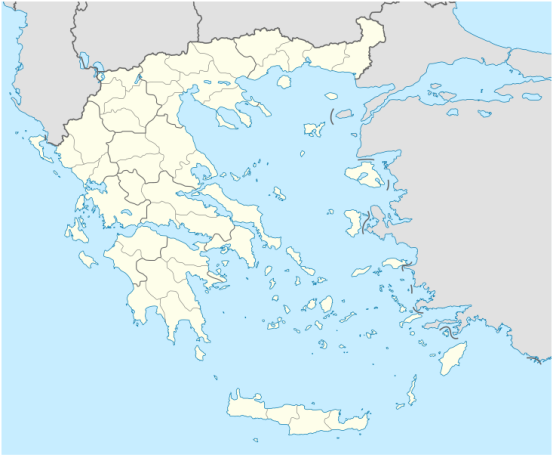
Transport
The city is served by Chania International Airport (IATA code: CHQ) on the Akrotiri Peninsula. The airport is named after Daskalogiannis, a Sfakiot hero who was skinned by the Ottomans in the 18th century.
There are several flights a day from Athens to Chania, with Aegean Airlines and Olympic Airlines. From April-early November, there are many direct charter flights to Chania from the United Kingdom, Germany, Scandinavia, the Netherlands and other European countries.
Souda, some 7 km (4.3 mi) from Chania, is the city's port, with daily ferries to Piraeus and a hosting a major Greek and NATO naval base.
III.Economy
Chania GPD: GDP: 2.56 billion €uros
Reference: https://www.etan.gr/en/chania-at-a-glance/
IV.Industrial Characterisitics
Two main sources of wealth in Chania are agriculture and tourism. A big portion of the city's residents (not necessarily farmers) own from few to many decares of agricultural land where several plants are being cultivated, the most common ones being olive trees and citrus. Other important products include wine, avocados, dairy etc. Apart from the traditional ways of cultivation, some of the producers have concentrated on practicing new methods in order to promote organic food. The organization of the Agricultural August has been a recent attempt to promote local quality products including a series of activities organised by the Prefecture of Chania since 1999 has proved very successful.
On the other hand, starting from the early 1970s, tourism has developed rapidly. Nowadays the tertiary sector is becoming more and more important for the locals, since an increasing number of them are participating in the business. Agrotourism and ecotourism are forms of tourism which are significantly developing lately.
There is also some secondary industry with focus on the processing-packaging of agricultural products (some of them export oriented) or manufacture products that support the agricultural production.
An important centre of the economic activities in the town is the Chania Chamber of Commerce and Industry (E.B.E.X.).
Programming Period Projects 2014-2020
The NSRF (Partnership Pact for the Development Framework) 2014-2020 is the basic strategic plan for the development of the country with the assistance of significant resources coming from the European Structural and Investment Funds (GRNET) of the European Union. Through the implementation of the NSRF, the aim is to address the structural weaknesses of the country that contributed to the emergence of the economic crisis but also the problems, economic and social, that it created. Also, the NSRF 2014-2020 is called to assist in achieving the national goals towards the "Europe 2020" Strategy. The aim of the Europe 2020 Strategy is to promote growth:
smarter, with more effective investment in education, research and innovation,
sustainable, thanks to the decisive transition to a low carbon economy, and
inclusive, with particular emphasis on job creation and poverty reduction
Financial priorities:
1. Enhancing the competitiveness and extroversion of enterprises, transition to quality entrepreneurship with a focus on innovation and increasing domestic added value
2. Development and utilization of human resources skills - active social integration
3. Environmental protection - Transition to an environmentally friendly economy
4. Development - modernization - completion of infrastructure for economic and social development
5. Improving the institutional adequacy and efficiency of public administration and local self-government
The Municipality of Chania implemented important projects (https://www.chania.gr/files/54/41236/palia_poli.pdf) in the programming periods 2000-2006 3rd CSF and 2007-2013 NSRF (https://www.chania.gr/files/54/41236/palia_poli.pdf ) .
Especially for the area of the Old Town of Chania, significant completed projects have been implemented since 1996-2013
In the current NSRF programming period 2014-2020, the following acts are being implemented, some of which are also part of the Sustainable Urban Development Strategy (NEA) of the Municipality:
Reference: https://www.chania.gr//dimos/erga-espa/ESPA2014-2020.html
V.Attractions
1, Old Venetian Harbour.
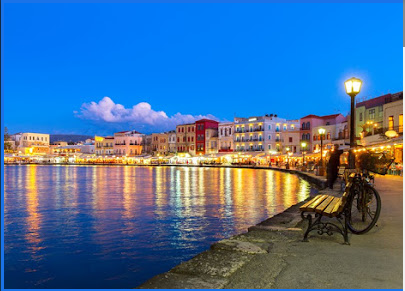
Built 1320–1356 by the Venetians, this busy harbor includes a restored lighthouse, shops & eateries.
Address: Agiou Markou 8, Chania 731 32, Greece
2, Archaeological Museum of Chania
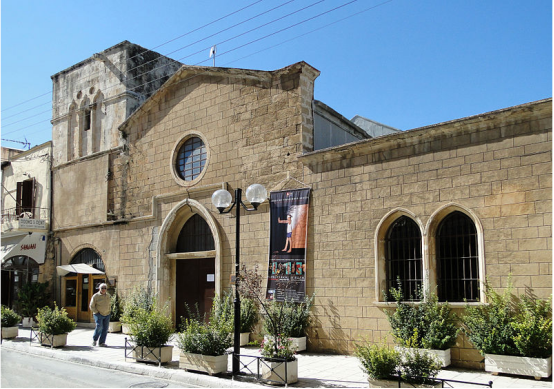
The Archaeological Museum of Chania (Greek: Αρχαιολογικό Μουσείο Χανίων) is a museum located in the former Venetian Monastery of Saint Francis at 28 Chalidon Street, Chania, Crete, Greece. It was established in 1962.
Building
The exact date that the building was constructed is unknown although it was mentioned in writing as standing during the great earthquake of 1595 and being the largest in the city. It served as a Venetian church inhabited by Franciscan friars, and became an important monument of the city.
During the period of the Ottoman occupation, the building was used as a mosque and named after Yussuf Pasha, the conqueror of Chania. At the turn of the 20th century it became the “Idaion Andron” Cinema and after World War II it served as a storehouse for military equipment, until it was converted into the museum in 1962. The archaeological collection of Chania itself was formerly housed in various public buildings such as the Residency, the Boys’ High School, and the Hassan Mosque.
In May 2008, the Crete Gazette announced that a new museum building is due to be constructed in the Chatzidakis Camp in the historical Chalepa area of Chania overlooking the sea. The modern building, designed by Theofanis Bobotis, who also designed the Patras Museum, will cover 6,500 square meters, including 1,800 square meters for exhibition halls, 140 square meters for the gallery and a 140-seat amphitheatre. The new archaeological museum of Chania will also include interior and open-air exhibition areas, skywalks, a shop, a cafeteria and other visiting rooms.
Interior
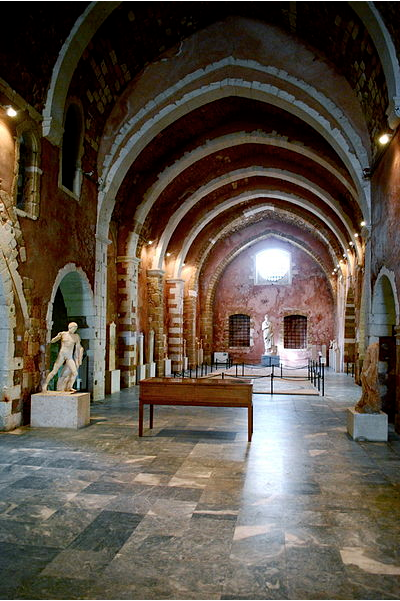
Interior of the museum
The museum contains a substantial collection of Minoan and Roman artifacts excavated from around the city of Chania and the surrounding regional unit, including pieces from the ancient cities of Kydonia, Idramia, Aptera, Polyrinia, Kissamos, Elyros, Irtakina, Syia and Lissos, and also from Axos and Lappa in Rethymno regional unit.
The museum contains a wide range of coins, jewellery, vases, sculpture, clay tablets with inscriptions, stelae and mosaics. The collection includes a clay sealing from Kasteli, with a representation of a Minoan city and its patron deity dated to the second half of the 15th century BC. There is a clay pyxis with a representation of a kithara player excavated from a chamber tomb in the area of Koiliaris in Kalyves-Aptera dated to 1300–1200 BC.There is also a clay tablet inscribed with Linear A script from Kasteli, dated to 1450 BC and small clay tablets with texts in Linear B script dated to 1300.
The museum has a Roman floor mosaic, depicting Dionysos and Ariadne. The Archaeological Museum of Chania also has an ancient Cycladic style vessel from Episkopi, Kissamos and a number of busts including one of Roman emperor Hadrian, found at the Dictynaion sanctuary in 1913 and a late Minoan sarcophagus from the necropolis of Armeni, dated to 1400–1200 BC. There is also a spherical flask, noted for its unusual ceramic type, dated to the Late Minoan III period.
3, Chrissi Akti
Golden Beach
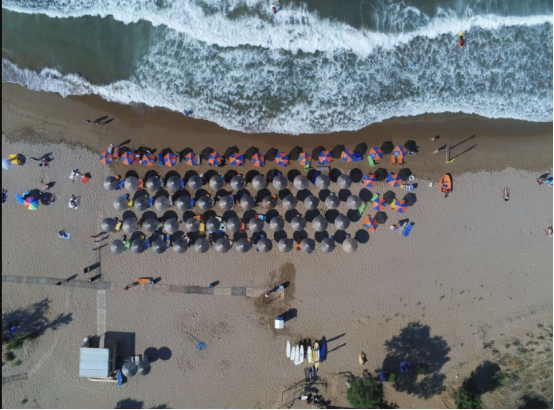
"Nice and big beach with fine sands and shallow warm water."
"Nice choice for swimming very close to the city center!"
4, Nautical Museum of Crete
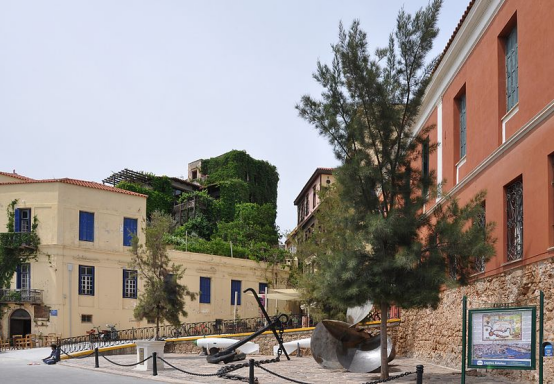
The Nautical Museum of Crete is a museum in Chania, Crete, Greece. Its collection includes models of ships, nautical instruments, painting, historical photographs and war relics. The material is classified chronologically, starting from the Bronze Age up to our times.
Main Collection
The main collection is located at the entrance to the Firka Fortress, on the West side of Chania harbour.
The exhibits of the first floor include models of ancient ships, a model of the fortified town and port under Venetian rule, a model that shows shipbuilding and repair buildings, with a rowing ship inside.
The second floor exhibits include models of modern Hellenic Navy ships, destroyers, a missile boat, a landing ship with trucks and APVs on board. The exhibits include the full bridge of a destroyer and two torpedo propulsion units. A section of the museum is dedicated to the German invasion of Crete.
Ancient Naval Architecture Collection and Minoan Ship Replica
In the Moro Shipyard at the eastern end of the harbour is a smaller exhibition of ancient naval architecture. This is dominated by a 17m experimental replica Minoan ship constructed between 2001 and 2004 (and eventually sailed and rowed to Piraeus)
5, Firka Castle
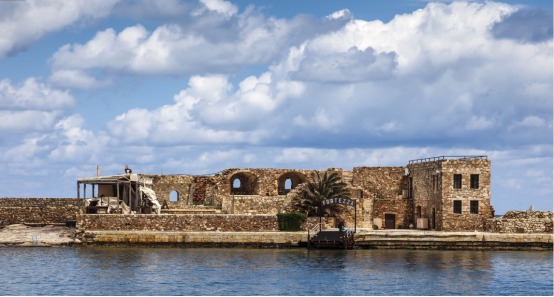
Venetian-built fortress from the mid-16th century featuring scenic harbor views & a maritime museum.
Address: Chania 731 31, Greece
Phone: +30 2821 040095
6, Nea Chora Beach
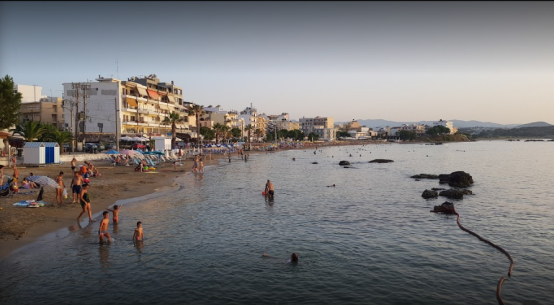
Bustling, sandy stretch with low-rise hotels, plus restaurants & cocktail bars with ocean views.
Address: 29,, Akti Papanikoli 23, Chania 731 31, Greece
Phone: +30 2821 341600
7, Lighthouse
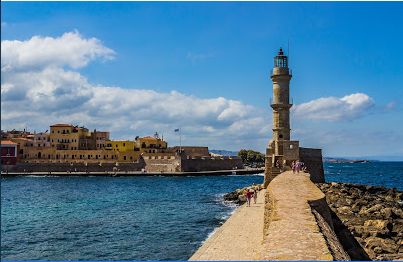
Venetian lighthouse originally built in the 16th century & later modified by the Egyptians in 1839.
Located in: Old Venetian Harbour.
Address: Chania 731 32, Greece
8, Venizelos Graves
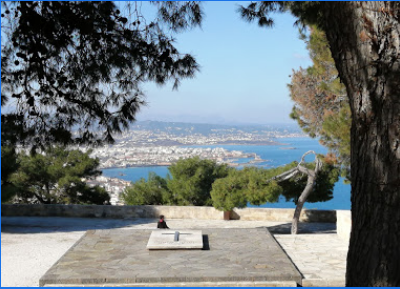
Venizelos graves are located in a very historic location of Chania, next to the Venetian church of Prophet Elias at position Froudia with panoramic views to Chania.
Address: Agorastaki 4, Chania 731 33, Greece
9, Limnoupolis
Opened in 1997, this water park on 65,000 sq. m. offers slides, a kids' pool & bars/eateries.
Address: Βαρύπετρο 731 00, Greece
Phone: +30 2821 033246
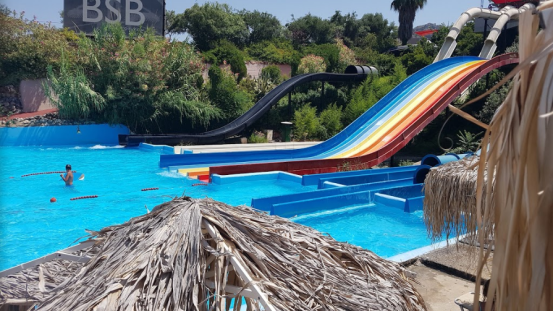
10, Old City of Chania
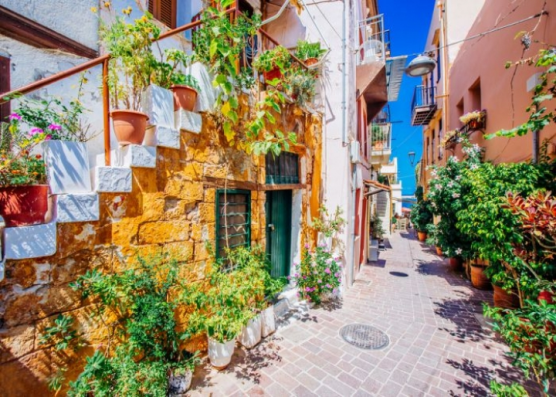
VI.History
Early history
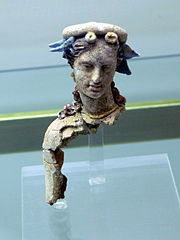
Hellenistic head of a woman from the cemetery of ancient Kydonia in the Archaeological Museum of Chania.
Chania is the site of the Minoan settlement the Greeks called Kydonia, the source of the word quince. It appears on Linear B as ku-do-ni-ja. Some notable archaeological evidence for the existence of this Minoan city below some parts of today's Chania was found by excavations in the district of Kasteli in the Old Town. This area appears to have been inhabited since the Neolithic era. The city reemerged after the end of the Minoan period as an important city-state in Classical Greece, one whose domain extended from Chania Bay to the feet of the White Mountains. The first major wave of settlers from mainland Greece was by the Dorian Greeks who came around 1100 BC. Kydonia was constantly at war with other Cretan city-states such as Aptera, Phalasarna and Polyrrinia and was important enough for the Kydonians to be mentioned in Homer's Odyssey (xix.200). In 69 BC, the Roman consul Caecilius Metellus defeated the Cretans and conquered Kydonia to which he granted the privileges of an independent city-state. Kydonia reserved the right to mint its own coins until the 3rd century AD.
Byzantine and Arab era
The early Christian period under Byzantine rule (First Byzantine Period, 395–824 AD) and the rule of the Arabs, who called the settlement Al Hanim ("the Inn"), are not well documented. Under the Arabs, the Christian population was persecuted and moved to the mountains. The Byzantine Empire retook the city in 961 AD (Second Byzantine Period, until 1204 AD). In this period the Arabic name of the city was changed into Greek Chania. Byzantines began to strongly fortify the city in order to prevent another Arab invasion, using materials from the ancient buildings of the area. By this time Chania was the seat of a bishopric, which would be known under Venetian rule as Roman Catholic Diocese of La Canea and later become the Latin titular see of Cydonia.
Venetian era
Venetian shipyards.
After the Fourth Crusade (1204) and the fall of Byzantium in the Hellenic area, Crete was given to Bonifacio, Marquess of Montferrat. He in turn chose to sell it to the Venetians for 100 silver marks. In 1252 the Venetians managed to subdue the Cretans but in 1263, their rivals of Genoa, with local support, seized the city under the leadership of Enrico Pescatore, count of Malta, and held it until 1285, when the Venetians returned. Chania was chosen as the seat of the Rector (Administrator General) of the region and flourished as a significant commercial centre of a fertile agricultural region.
The Venetian rule was initially strict and oppressive but slowly the relations between the two parts improved. Contact with Venice led to close intertwining of Cretan and Venetian cultures, without, however, the Cretans losing their Greek Orthodox nature. The city's name became La Canea and its fortifications were strengthened, giving Chania the form that it still has today. On the other hand, after the fall of Constantinople in 1453, many priests, monks and artists took refuge in Crete and reinforced the Byzantine religion and culture on the island. The city of Chania during the period that followed was a blend of Byzantine, Venetian, and Classical Greek cultural elements. Many of the important buildings of the town were built during this era and the intellectual activities (written word, music, education) were also promoted.
Ottoman era
The old harbour during the Ottoman era.
During the opening months of the Cretan War (1645–1669) the city's walls did not prevent an Ottoman army from capturing it from the Venetians after a two-month siege. Many Cretans fled to escape persecution, many others were slaughtered or converted to Islam, while numerous Turkish Muslim settlers arrived changing the ethnic mix of the city.
Muslims resided mainly in the eastern quarters, Kastelli and Splantzia, where they converted the Dominican church of St Nicholas into the central Sovereign's Mosque (Turkish: Hünkar Camısı).[6] They also built new mosques such as the Küçük Hasan Pasha Mosque or Yali Mosque on the harbour.[7] Public baths (hamam), and fountains were a feature of the Ottoman city.[8] The pasha of Crete resided in Chania.
The city remained under Ottoman control despite fighting during the Greek War of Independence (1821-29), the Cretan Revolt (1866–1869) and the Cretan Revolt (1878). Due to the island's mixture of Muslim and Christian residents, Crete was the subject of international debate between the European great powers, most notably at the Treaty of Berlin (1878) which resulted in the Pact of Halepa. During the 19th and early 20th century inter-ethnic violence on Crete eventually led to the mass migration of the island's local Muslim population to other Mediterranean islands or coastal cities. Mass conversions also occurred. The population exchange between Greece and Turkey in 1922 resulted in the deportation of the island's last Muslim residents.
Modern era
Eleftherios Venizelos (1864–1936), major political figure of the 20th century European scene, was born in Chania.
In 1898, during the final moves towards independence and enosis—union with Greece—the Great Powers made Chania the capital of the semi-autonomous Cretan State ("Kritiki Politeia"), with Prince George of Greece, the High Commissioner of Crete living here. During these years Crete issued its own stamps and money. This was a very important transitional period when, no longer an isolated vilayet of the Ottoman Empire, the city became more cosmopolitan and flourishing, regaining its role as the crossroad of civilizations, influenced by Europe as well as by the East. Many important buildings were built during this era, intellectual and artistic societies were created and a new class of local aristocracy brought a different atmosphere to the everyday life of the town. The district of Halepa has many fine neoclassical embassies and consulates dating from this period.
However the main goal was enosis with Greece which came after Eleftherios Venizelos's constant opposition to Prince George's rule over Crete. The series of conflicts includes the Therisos revolt in 1905, which overthrew Prince George and brought Alexandros Zaimis to rule Crete. Finally, in 1908, Venizelos managed to establish a revolutionary government, recognized by the Great Powers. His later election as the prime minister of Greece (1910) eventually led to Crete's union with Greece on 1 December 1913, following the Balkan Wars. The Greek flag was raised for the first time at Fort Firka in the Old Harbour in the presence of Venizelos and King Constantine.
Due to the popularity of Venizelos, Chania as with most of Crete remained staunchly pro-Venizelist, pro-Liberal and later pro Republican in the National Schism and the interwar period. The only attempt to overthrow the monarchist Metaxas Regime occurred in the city with the failed 28 July 1938 uprising.
Chania in World War II
Another important period for the city of Chania was the invasion and occupation by German forces during World War II. The British force that faced the German paratroopers during the Battle Of Crete in 1941, had artillery elements over the hill of Dexameni in the south of the city. These elements bombarded the German forces in the Maleme airfield undetected, until they ran out of ammunition. George II of Greece stayed in a villa near the village of Perivolia outside Chania before escaping to Egypt. Part of the city was bombed and a significant proportion of the area's population was either executed or imprisoned due to participation in the resistance against the German rule. The Jewish community of Chania was also eliminated during the German occupation. Most of them were transported off the island by the Nazi occupiers in 1944. Tragically, a British torpedo sank the ship Tanais, which was carrying most of the Jewish prisoners.
Post-World War II era
The city of Chania slowly regained its normal pace of development during the 1950s, trying to overcome the difficulties that the war had left in its aftermath. During the 1970s, Crete became a major tourist destination for Greek and international tourists, something that gave a significant boost to the city's economy and affected the everyday life and the overall culture of the locals. The capital of Crete was moved to Heraklion in 1971.
Since the 1990s the city of Chania has entered a new era, mainly due to construction and infrastructure such as a new airport, port and educational facilities, and it is considered a prominent tourist resort in the Mediterranean Sea.
VII.Other information
Culture
There are several museums, art galleries, theatre and music groups, educational and research institutions within the city.
The most important museums in Chania are:
-- Archeological Museum of Chania in Saint Francis Monastery. It houses findings from different parts of the county and from several historical and prehistorical periods of the local history (Neolithic to Roman)
-- Folklore Museum (Old Town)
-- Historical Archive (the second most important in Greece)
-- Nautical Museum of Crete (Old Town)
-- Municipal Art Gallery
-- Byzantine/Post-Byzantine Collection (Old Town)
-- House of Eleftherios Venizelos
-- War Museum
-- Museum of Chemistry
-- School life museum
-- Museum of Typography, Chania
Several theatre groups are active in Chania with the most important being the Municipal and Regional Theatre of Crete (DI.PE.THE.K). The repertoire includes old and contemporary plays from Greek and foreign writers. The Venizelian Conservatory of Music ("Odeion", established 1931) is also one of the most important cultural societies in Crete. A recent attempt from the municipality to create a chamber music group named "Sinfonietta" has been successful and its performances throughout the year have enriched the cultural event calendar of the city. There is also a significant community of people who focus on alternative/indie music as well as jazz and bands performing modern musical styles. A number of traditional [Cretan] musicians are also active in town.
There are five cinemas (two of them open-air), concentrating both in commercial and independent movies and occasionally organizing small festivals.
During the summer period a variety of cultural events take place on a daily basis.[citation needed] Theatrical plays, concerts and several exhibitions from Greek and foreign artists are organized either by the municipality or by individuals. A venue which hosts many of these events is a theater located in the east bulwark of the Old Town ("Anatoliki Tafros"). Also, several festivals, conferences and sport events take place in Chania, especially between May and September. The Venizeleia athletics competition is one of the most noteworthy events of the year.
A major role in the city's cultural life is played by the Municipal Cultural Corporation of Chania (DI.P.E.X.) which organizes a significant part of the events taking place throughout the year.
There are a French, a German, an Italian and a Swedish consulate in Chania.
Education and research
Educational institutions located at the greater area of the city are:
-- Technical University of Crete
-- The Chania branch of the Technological Educational Institute of Crete[24]
-- The Mediterranean Agronomic Institute of Chania
-- The Merchant Marine Academy of Crete (AEN KRITIS)
Other research and intellectual institutes and societies in Chania are:
-- The National Research Foundation "Eleftherios K. Venizelos"
-- The Mediterranean Architecture Centre (KAM)
-- The Institute of Olive Tree and Subtropical Plants of Chania
-- The Institute of Cretan Law
-- The Historical, Laographical and Archaeological Society of Crete
-- Institute of Regional Press, Chania
Primary and secondary schools are mainly public in Chania (as in all cities in Greece). However, there has been a slow development of some private high schools recently. Among the "Eniaia Lykeia" (Unified Upper Secondary Schools) of the town there is an autonomous Ecclesiastical Lyceum in Agios Mattheos.
Health care
The main hospital in the city is the General Hospital "Agios Georgios". Other health institutions include the Crete Naval Hospital, the branch of the National Centre for Emergency Medical Care (E.K.A.B.) and the Clinic of Chronic Disease. The Chania branch of the Organisation Against Drugs (Ο.ΚΑ.ΝΑ.) opened in 2003.
There is also a number of private clinics (e.g. Iasis and Central Clinic of Chania[28]) as well as medical centres specialising in various areas within the city.
VIII.Contact information
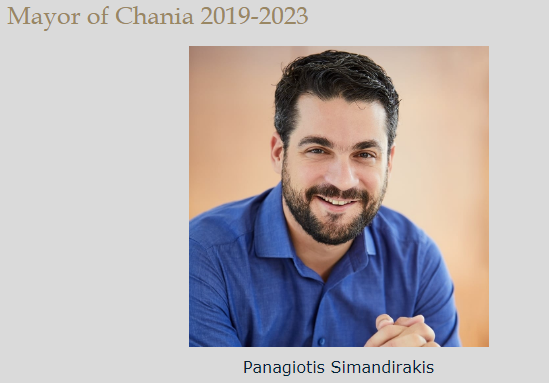
Panagiotis Simandirakis was born in Kera Kissamos in 1982.
He is a graduate of the Department of Economics and holds a master's degree in Applied Economics and Finance with a specialization in European integration, from the National & Kapodistrian University of Athens.
He worked as a financial consultant at "Athinaiki Anaptyxiaki", while he is a co-owner of the family craft "Cretan Dishes Simandiraki".
He is the general secretary of the Economic Chamber of the Department of Western Crete, while he is an elected member of the Central Delegation of the Economic Chamber of Greece.
In 2010 he was elected for the first time Regional Councilor of Crete with the combination "Crete First Force" of Stavros Arnaoutakis, first in votes in the Regional Unit of Chania, and participated as a regular member in the Economic Committee of the Region of Crete.
In 2014 he was re-elected and served as Deputy Regional Minister of Education, Lifelong Learning and Employment until 2017. From 2017 to 2019, he was a mandated Regional Councilor in Education & Lifelong Learning.
He participated for the first time in the Municipal Elections of 2019 and was elected Mayor of Chania as head of the "For Chania" association.
Finally, he is the inspirer and Chairman of the Organizing Committee of the Rock Festival.
Municipality of Chania
Address: Kydonia 29, PC 73135, Chania Crete
Tel. 28213-41600
Fax. 28210-93300
dimos@chania.gr
CIVIL TRANSPARENCY AND SUPPORT OFFICE: politis@chania.gr 28213-41767
COMMUNICATION AND PUBLIC RELATIONS OFFICE: press@chania.gr 28213-41633
https://www.chania.gr/
Social Media:
Facebook: Δήμος Χανίων - Municipality of Chania @Chania.city
Twitter: Δήμος Χανίων @chania_city
Youtube: https://www.youtube.com/user/municipalityofchania
